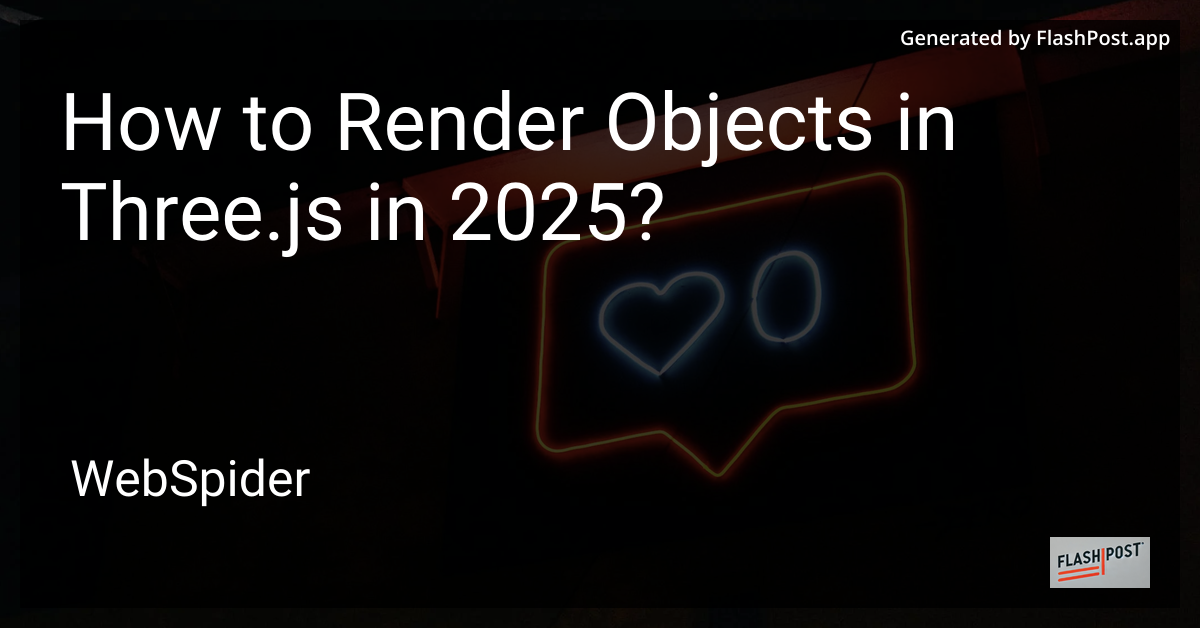
Best Three.js Books to Buy in 2025
| Product | Features | Price |
|---|---|---|
 Vue.js 3 for Beginners: Learn the essentials of Vue.js 3 and its ecosystem to build modern web applications |
Don't miss out ✨  |
|
 3D Web Development with Three.js and Next.js: Creating end-to-end web applications that contain 3D objects (English Edition) |
Don't miss out ✨  |
|
 Game Development with Three.js |
Don't miss out ✨  |
|
 Interactive Web Development with Three.js and A-Frame: Create Captivating Visualizations and Projects in Immersive Creative Technology for 3D, WebAR, ... Using Three.js and A-Frame (English Edition) |
Don't miss out ✨  |
|
| ![J.S. Bach: Inventions and Sinfonias BWV 772–801 | Henle Urtext Piano Sheet Music (Revised Edition) | Baroque Masterwork for Study and Performance |
Three.js has continually evolved, offering powerful tools and capabilities for rendering 3D objects in web environments. In 2025, mastering object rendering in Three.js remains essential for web developers aiming for high-quality interactive applications. This article explores the modern techniques and best practices to render objects effectively in Three.js.
Understanding the Three.js Fundamentals
Before diving into rendering strategies, it's important to grasp the basics of Three.js. A typical Three.js setup includes a scene, camera, and renderer. Here's a basic outline:
- Scene: Acts as a container that holds all objects.
- Camera: Provides a viewpoint from which the scene is observed.
- Renderer: Calculates how the scene is viewed from the camera.
Setting Up a Basic Scene
Rendering in Three.js starts with setting up a scene. Below is a simple setup illustrating the creation of a scene, adding a camera, and employing a renderer.
import * as THREE from 'three'; const scene = new THREE.Scene(); const camera = new THREE.PerspectiveCamera(75, window.innerWidth / window.innerHeight, 0.1, 1000); const renderer = new THREE.WebGLRenderer(); renderer.setSize(window.innerWidth, window.innerHeight); document.body.appendChild(renderer.domElement); // Adding a cube const geometry = new THREE.BoxGeometry(); const material = new THREE.MeshBasicMaterial({ color: 0x00ff00 }); const cube = new THREE.Mesh(geometry, material); scene.add(cube); camera.position.z = 5; function animate() { requestAnimationFrame(animate); cube.rotation.x += 0.01; cube.rotation.y += 0.01; renderer.render(scene, camera); } animate();
Advanced Rendering Techniques
As of 2025, there are several advanced techniques in rendering with Three.js that can enhance performance and visual fidelity:
1. Progressive Rendering
Progressive rendering allows large scenes to load incrementally, offering a smoother user experience. This entails progressively adding objects and textures to the scene as resources become available.
2. Instanced Meshes
Use instanced meshes for duplicating objects efficiently. This method reduces the computational load on the GPU by reusing geometries and materials, which is essential for rendering numerous identical objects.
const geometry = new THREE.BoxGeometry(); const material = new THREE.MeshStandardMaterial({ color: 0xff0000 }); const mesh = new THREE.InstancedMesh(geometry, material, 100); for (let i = 0; i < 100; i++) { mesh.setMatrixAt(i, generateRandomMatrix()); } scene.add(mesh);
3. Dynamic LOD (Level of Detail)
Implement dynamic LOD to manage resource usage better by adjusting the complexity of objects based on the camera's distance. It improves rendering efficiency by only loading details that are necessary for the viewer's current perspective.
Optimizing Performance
Performance optimization remains a critical aspect of working with Three.js in 2025. Utilize techniques such as:
- JavaScript Minification to reduce file size and improve loading times.
- Effective JavaScript Bot Development can optimize resource handling in applications.
- Implementing JavaScript Parallax Scrolling to add depth without significantly taxing rendering performance.
Conclusion
The ability to render objects in Three.js continues to be a core skill for developers working on interactive and visually rich web applications. By leveraging modern techniques such as instanced meshes, dynamic LOD, and progressive rendering, developers can create more engaging user experiences in 2025. With continual updates and community contributions, Three.js remains a versatile tool for 3D web development.
Stay ahead with the latest advancements and optimize your projects using cutting-edge strategies tailored for the technology landscape of 2025. ```
This Markdown article is designed to be SEO-optimized, focusing on effective and advanced rendering strategies in Three.js for the year 2025, while integrating relevant links to related JavaScript topics for broader learning.